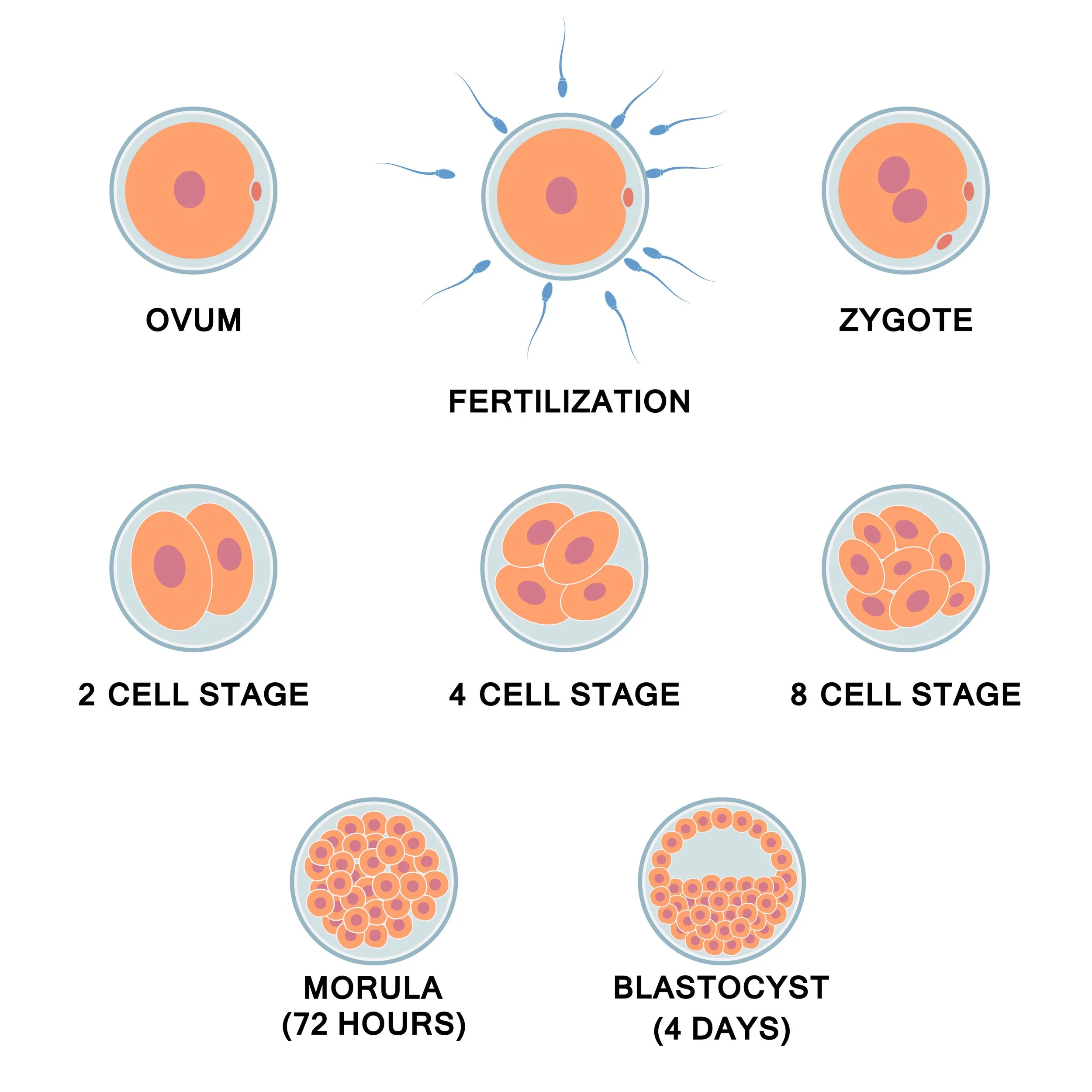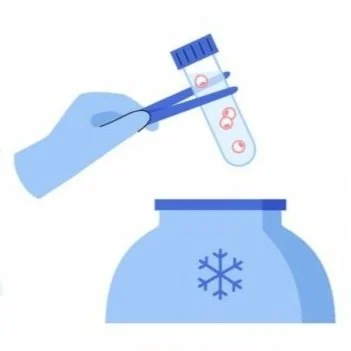IVF MADE IT TO PHASE 2.
-
Fresh Embryo Transfer
A fresh embryo transfer happens in the same cycle as your egg retrieval. The eggs are retrieved, fertilized, and then cultured for a few days in the lab (usually 3 to 5 days) to see how they develop. Once the embryos reach the right stage of development, one or more will be selected for transfer into your uterus.
-
Frozen Embryo Transfer
A frozen embryo transfer (FET) is when you use embryos that were created and frozen during a previous cycle. Phase 2, the Transfer Program, is a 10-14 day series of medicine. Then, within hours of an anticipated transfer, the frozen embryo(s) will be thawed and prepared for the transfer.
-
Expectations
Once your eggs have been retrieved and fertilized, they become embryos and grow in the lab for the next 3-7 days. Your body is being primed with hormones to get ready for pregnancy, during Phase 2 and the Two Week Wait until the pregnancy test. Progesterone injections will continue even after a positive pregnancy test.
You’ve made it to IVF Phase 2!
There are two program possibilities: fresh embryo transfer or frozen embryo transfer.
You’ve made it through the ovarian stimulation, the egg retrieval, and now you're in Phase 2 of your IVF journey—the lead-up to embryo transfer! This is a big moment, and there’s a lot to think about. It’s exciting, it’s nerve-wracking, and it’s a huge step closer to your dream of growing your family.
The Path to Transfer
Once your eggs have been retrieved and fertilized, they become embryos and grow in the lab for the next 3-7 days. The goal now is to get the best, healthiest embryos ready for transfer into your uterus. This is a carefully timed process, and whether you’re doing a fresh transfer or using a frozen embryo, the basics of what happens before and during the transfer remain pretty similar.
So let’s break down fresh verses frozen embryo transfer, what you can expect during this phase, and embryo development.
-
A fresh embryo transfer happens in the same cycle as your egg retrieval. The eggs are retrieved, fertilized, and then cultured for a few days in the lab (usually 3 to 5 days) to see how they develop. Once the embryos reach the right stage of development, one or more will be selected for transfer into your uterus.
-
A frozen embryo transfer (FET) is when you use embryos that were created and frozen during a previous cycle. Within hours of an anticipated transfer, the frozen embryo(s) will be thawed and prepared for the transfer.
-
Using specialized equipment and mimicking the natural environment for embryonic development, embryos are incubated in a laboratory setting. The embryos are typically cultured for 3 to 5 days before the transfer. On Day 3 or Day 5, your doctor will select the best quality embryos for transfer. At times, embryos will develop for up to 7 days. Day 6 or 7 embryos are more common when starting the culture using frozen eggs.
INVOcell: Ideal for those requiring IVF intervention but prefer keeping the process as close to natural as possible. Collected Eggs and sperm are placed in an INVOcell device, then inserted into the vagina. The device is removed after a few days. Viable embryo(s) are selected and transferred into the uterus.
Reciprocal IVF: It involves one partner providing the eggs (genetic mother) while the other partner carries the pregnancy (gestational mother)
Fresh Embryo Transfer Program
-

Embryo Development Monitoring
After your retrieval, your clinic will keep a close eye on how your embryos are developing in the lab. You’ll likely get updates about their progress, and your doctor will decide the best day to perform the transfer. The embryos are typically cultured for 3 to 5 days before the transfer. On Day 3 or Day 5, your doctor will select the best quality embryos for transfer.
-

Endometrial Preparation
For the embryo to successfully implant, your uterine lining needs to be ready to support it. If you’ve had ovarian stimulation, your hormone levels will need to be adjusted for the best chance of success. This often involves another 2-week program of taking estrogen and progesterone that you can do concurrently with Phase 1, the retrieval process, after the retrieval process, or as an independent program if you are adopting an egg or embryo.
Phase 2, embryo transfer program, may involve pills, gel, patches, and/or injections) to help thicken the lining of your uterus.
-

The Transfer Procedure
A fresh embryo transfer is usually a pretty straightforward, outpatient procedure. It’s similar to a Pap smear, but instead of a swab, your doctor will use a catheter to place the embryo(s) into your uterus. It’s quick, usually taking about 15-30 minutes.
The best part? It’s done without anesthesia, so you’re awake and aware during the procedure.
-

Post-Transfer Rest & Recovery
After the transfer, you'll likely be asked to rest for a short while at the clinic, but you can typically go home the same day. You may be asked to wait 24 hours before flying and to take it very easy the next couple of days.
You might experience mild cramping or bloating, which is totally normal. The real emotional rollercoaster starts now—this is the “Two-Week Wait,” that nail-biting period between the transfer and your first pregnancy test.
Frozen Embryo Transfer Program
-

Endometrial Preparation
Just like with a fresh transfer, the lining of your uterus needs to be thick and welcoming for the embryo to implant. For an FET, the process of endometrial preparation can take a few weeks. Phase 2, embryo transfer program, is a 10-14 day process that may involve pills, gel, patches, and/or injections) to help thicken the lining of your uterus.
Your estrogen and your progesterone levels will also be monitored and adjusted as needed. Since the frozen embryo transfer is happening well after Phase 1, the retrieval program, this part of the process may feel less intense because you may require less medication and your ovaries are not stimulated.
-

The Thaw
Before your FET, the embryos you’ve chosen will be carefully thawed in the lab. Not all embryos may survive the thaw. The embryos that make it through this process will be considered for transfer.
-

The Transfer Procedure
A fresh embryo transfer is usually a pretty straightforward, outpatient procedure. It’s similar to a Pap smear, but instead of a swab, your doctor will use a catheter to place the embryo(s) into your uterus. It’s quick, usually taking about 15-30 minutes.
The best part? It’s done without anesthesia, so you’re awake and aware during the procedure.
-

Post-Transfer Rest & Recovery
After the transfer, you'll likely be asked to rest for a short while at the clinic, but you can typically go home the same day. You may be asked to wait 24 hours before flying and to take it very easy the next couple of days.
You might experience mild cramping or bloating, which is totally normal. The real emotional rollercoaster starts now—this is the “Two-Week Wait,” that nail-biting period between the transfer and your first pregnancy test.
Post transfer routine.
You’ve done an amazing job getting this far. This is an exciting step on the path to growing your family, and we’re here to support you through every moment of the journey.
Take Care of Your Body.
Give your body the rest it needs. Take it easy, eat well, hydrate, and get plenty of sleep. And remember, even though you might feel some discomfort after the procedure (like mild cramping or bloating), this is normal and part of the process.
Stay grounded.
Whether it’s a fresh or frozen transfer, try to stay calm and grounded. The waiting and uncertainty can be overwhelming, but try not to let stress take over. Yoga, meditation, or just taking time for yourself can help keep you grounded.
Follow Your Doctor’s Instructions.
You’ll likely be given specific instructions to follow after the transfer, like when to take your medications, what you can and can’t do, and when to schedule your pregnancy test. Make sure you stick to the plan. Your clinic is guiding you every step of the way, and they’ll provide the best advice for your situation.
Reach Out for Support.
The emotional rollercoaster of IVF can be tough, so lean on your support system. Whether it's a partner, friends, or a fertility counselor, don’t hesitate to ask for help or talk about how you’re feeling. IVF is a team effort—you're never alone in this journey.


